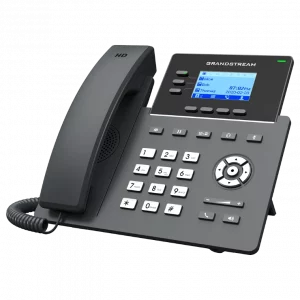
SIP: Pros and Cons of Today’s Technology
As cloud-based infrastructure improves, SIP communications platforms are becoming ubiquitous with modern business. According to Transparency Market Research, the market for SIP trunking is set to far exceed $40 billion by 2031 – and its feature-rich possibilities and greater functionality over traditional phone systems are no doubt the driving factors in this growth.
With so much inertia behind SIP technology, what are the SIP pros and cons you should know before making the move? We’ll cover the most essential factors to consider when deciding if a custom, full-scale SIP platform is right for your business.
An Overview of SIP Pros and Cons
SIP (Session Initiated Protocol) is one of the leading internet-powered phone technologies, thanks to a range of benefits over traditional telephone systems. Specifically, it provides numerous innovative features that enhance business productivity and that have become essential to today’s business communications. Traditional phone system simply cannot offer this.
At the same time, it’s not a completely perfect solution – and though the technology is becoming extremely cohesive, user-friendly, and reliable, SIP systems still have a few potential drawbacks to consider.
However, as we’ll discuss, most of these potential issues are easily mitigated by conducting due diligence and seeking out the most advanced SIP provider with the particular features that match the needs of your business.
The Advantages of SIP
SIP has a host of advantages, ranging from improvements on the basic functionality of traditional phone systems to incredible advances in the way even small businesses can leverage their communications network to boost efficiency and the ease of doing business, all while cutting down on costs.
In general, the core advantages of SIP involve all the following:
- Streamlined communication with anyone in the world using any networking device
- A permanent reduction in communications costs
- Costs based on actual use, and a potential end of fees like dialer surcharges and certain monthly taxes
- No-obligation introductory periods (with select providers)
- Easy system-wide management from a central console
- Immediately scalability – your system grows in lockstep with your company
- Phone and messaging service independent of traditional telephone infrastructure
- Advanced features allow integration of phone and messaging into other software
- An incredibly flexible system that integrates with a wide range of telephony systems, such as PBX
Related: 10 of the Most Popular SIP Trunking Features
The Disadvantages of SIP
While it’s true that the fidelity of SIP calls depends on bandwidth, leading SIP providers have now designed their systems to automatically apply greater bandwidth resources to the most bandwidth-intensive communications on the fly. Further, the amount of bandwidth at your disposal in a SIP system is under your control, and upgrading it is as simple as placing an online order.
That said, if your internet provider cannot maintain connectivity for any reason, your primary communication system goes down with it – but this is rare, and even still, you can handle the most crucial matters via cellular service as your provider resolves any service issues, which usually happens quickly.
In the opposite case, if your copper phone lines went down without an alternative, you’d lose the entire system, and phone lines typically require much more time to troubleshoot and repair.
Security has been another main concern since the beginning of cloud migration, and this is always a worthy concern. System breaches can happen, and network providers must continually implement the most advanced security protocols to keep their clients secure.
Fortunately, advancements in security-rich SASE and SD-WAN infrastructure has vastly boosted VoIP and SIP security. With design protocols such as Zero-Trust authentication – which authorize each and every digital transaction – the security of advanced cloud-based infrastructure has, in certain ways, surpassed that of on-premise systems.
Not All SIP Is Created Equal
Aside from the general SIP pros and cons, the quality of different SIP services must be further compared to ensure your chosen SIP provider makes the most of the new technology.
Not every SIP trunking company uses Tier 1 providers (those with direct access to internet infrastructure) – and those that don’t usually hesitate to admit it. Serious businesses must ensure their prospective SIP provider explicitly states that they have direct relationships with Tier 1 providers. This cuts out third-party SIP providers and mitigates the majority of potential SIP disadvantages from the outset.
Other SIP providers are eager to sell in quantity, lacking the quality of service that alone can help you offload what otherwise might require increased IT administration time and resources. You should ensure your SIP system is as user-friendly as it is customizable, and the best providers are doing so with ultra-polished and intuitive control panels – but don’t let that replace the need for dedicated technical support.
In fact, dedicated tech support is essential to taking SIP beyond a mere replacement of traditional telephone service and leveraging it for maximum ROI. Your SIP provider should be equally accommodating when (1) getting you up to speed on making basic calls and texts, and (2) helping you maximize your use of the various features available in your SIP system.
Related: SIP Trunks: 10 Useful Tips for Businesses
Leveraging the Advantages of SIP
Far from merely a “new telephone system,” it’s important to look ahead and to the broader potential advantages beyond basic SIP pros and cons. The SIP features that could most effectively boost ROI of your SIP system include:
- Integration with other platforms and apps
- Advanced logging and data management for easy reference
- Automated communications (e.g., appointment notifications)
- Ability to access communications tools from any device
These are just some of the ways SIP is saving companies time and headaches by leveraging cloud-based communications for all it’s worth. Doing so will save your employees time, provide greater flexibility, and help your company hone its competitive edge.
Begin Your Transition to SIP Technology Today
When comparing SIP pros and cons and deciding whether to fully transition to SIP, it’s important to remember one of the most immediately useful advantages this technology has to offer new businesses: the ability to try it before you make a long-term commitment. SIP.us features the most competitive pricing and feature-rich SIP platforms with Tier-1 connectivity and superb technical support. If you’d like to test SIP in your real-time business operations, get started today.



